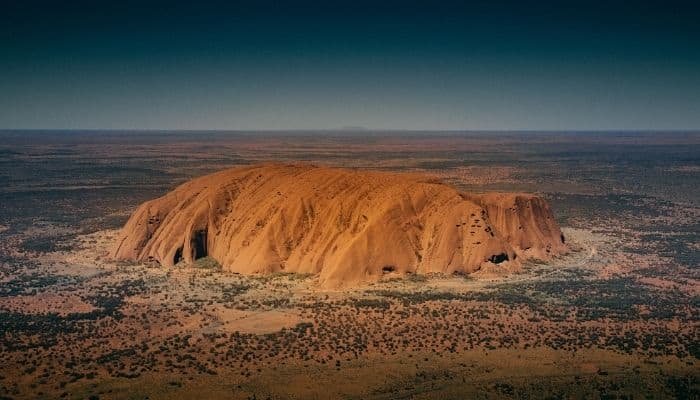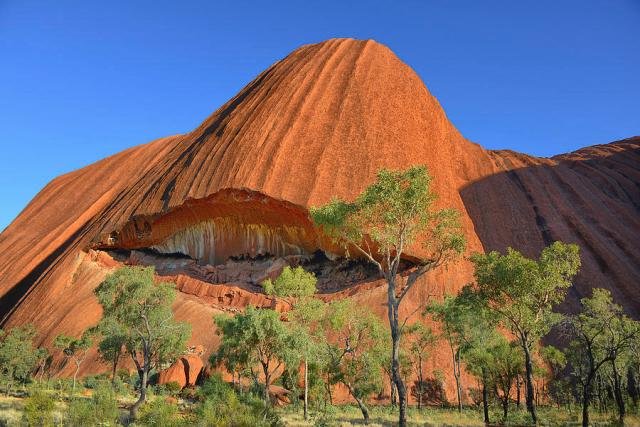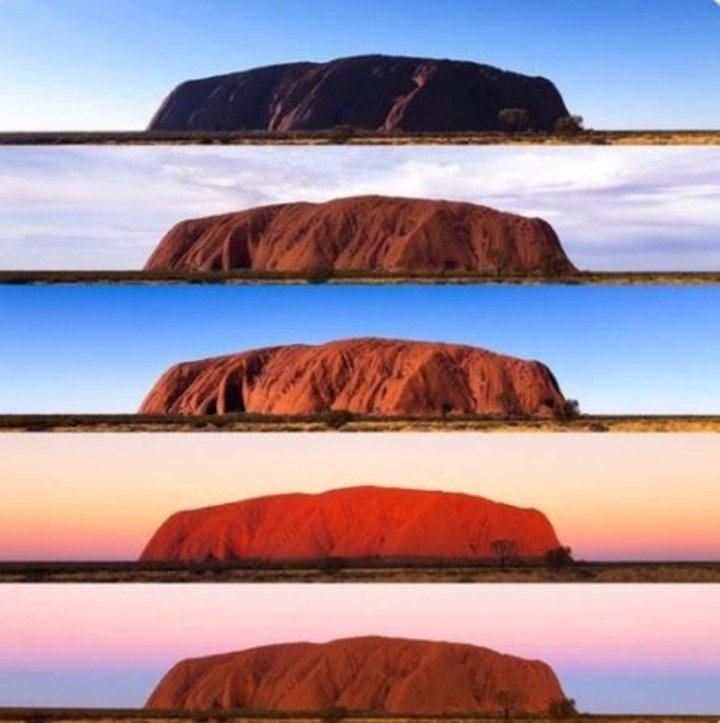Hola amig@s de Hive, hoy les comentaré acerca de una de las estructuras naturales más famosas de Australia: Monte Uluru (conocido también como Ayers Rock), se encuentra ubicado en el centro del Parque Nacional Uluru-Kata Tjuta, a 460 kilómetros al suroeste de la ciudad de Alice Springs, Australia.
Hello Hive friends, today I will tell you about one of the most famous natural structures in Australia: Mount Uluru (also known as Ayers Rock), is located in the center of the Uluru-Kata Tjuta National Park, 460 kilometers southwest of the city of Alice Springs, Australia.
Foto tomada de Billiken/Photo taken from Billiken
El Monte Uluru en realidad no es ni un monte ni una montaña es una formación rocosa denominada monolito (una única roca masiva). Dicho monolito tiene una altura de 863 metros sobre el nivel medio del mar y 348 metros respecto al terreno que lo circunda (aunque su mayor parte posee 2,5 kilómetros y está bajo tierra), tiene un poco más de 9 kilómetros de contorno.
Mount Uluru is actually neither a mountain nor a mountain, but a rock formation called a monolith (a single massive rock). This monolith has a height of 863 meters above mean sea level and 348 meters above the surrounding terrain (although most of it is 2.5 kilometers high and underground), it has a little more than 9 kilometers of contour.

Foto tomada de Bloudit/Photo taken from Bloudit
Es una formación rocosa compuesta por areniscas (roca sedimentaria) con pequeños fragmentos de feldespatos, cuarzo, hierro (el óxido de hierro es el que le otorga el color rojizo al Uluru), entre otros minerales. El aspecto del monte es el resultado de la erosión y meteorización de la arenisca a través de los años.
It is a rock formation composed of sandstone (sedimentary rock) with small fragments of feldspars, quartz, iron (iron oxide is what gives Uluru its reddish color), among other minerals. The appearance of the mountain is the result of erosion and weathering of the sandstone over the years.

Foto tomada de Geology Science/Photo taken from Geology Science
La principal atracción del monolito (además de su asombroso paisaje) es que su superficie cambia de color según la inclinación de los rayos del sol a lo largo del día y la variación climatológica de la zona. Por ejemplo, cuando los rayos de sol inciden horizontalmente (amanecer y atardecer)sobre su superficie adquiere un color rojo brillante; en la etapa lluviosa aquiere un color gris plateado con franjas negras, mientras que en horas de la mañana adquiere colores opacos.
Fue declarado Patrimonio de la Humanidad desde el año 1987.
The main attraction of the monolith (besides its amazing landscape) is that its surface changes color according to the inclination of the sun's rays throughout the day and the climatic variation of the area. For example, when the sun's rays strike horizontally (sunrise and sunset) on its surface it acquires a bright red color; in the rainy season it acquires a silvery gray color with black stripes, while in the morning hours it acquires opaque colors.
It was declared a World Heritage Site in 1987.

Foto tomada de Clarin.com/Photo taken from Clarin.com
Sin más, me despido/Without further ado, I bid you farewell.
Saludos desde Cuba/Greetings from Cuba.
Traducido por DeepL App/Traduced by DeepL App.
Congratulations @cordovi! You have completed the following achievement on the Hive blockchain And have been rewarded with New badge(s)
Your next target is to reach 1250 upvotes.
You can view your badges on your board and compare yourself to others in the Ranking
If you no longer want to receive notifications, reply to this comment with the word
STOPCheck out our last posts: